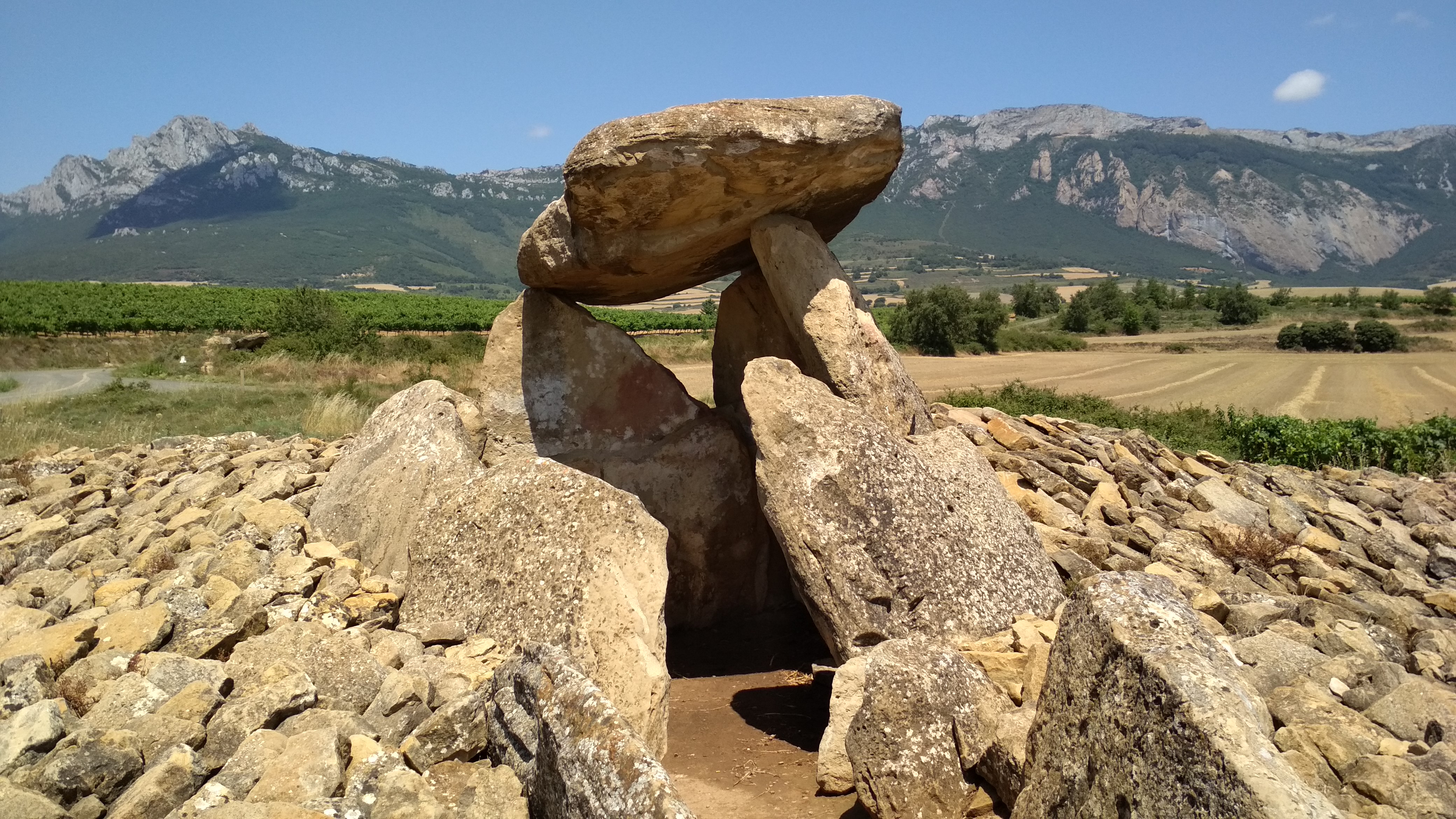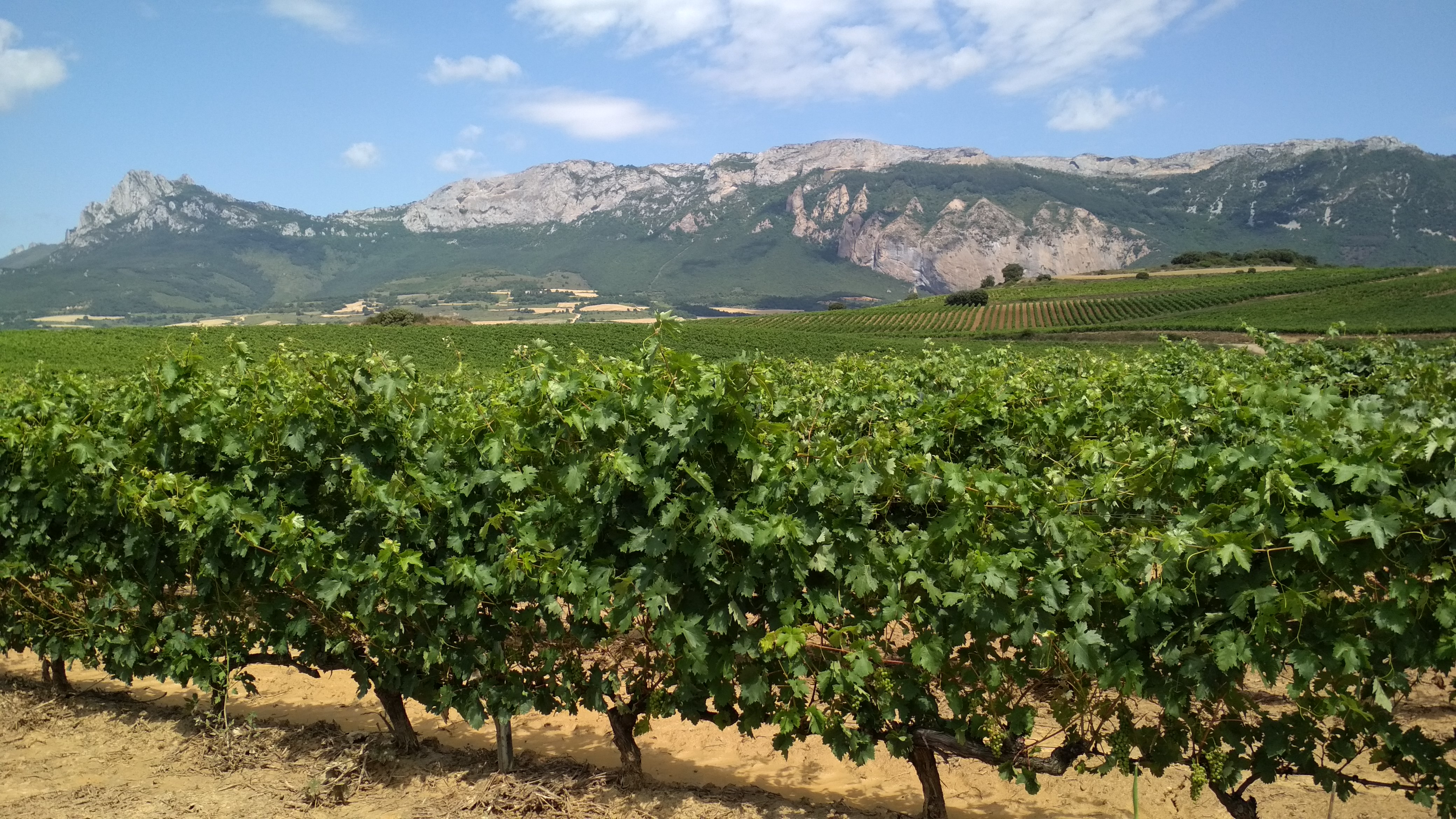Basque ethnography at a glance

Dolmen group known as Witch’s Hut with Toloño Range in the background. Elvillar (Álava), 2017. José Ángel Chasco.
The Ministry of Development, through the Spanish National Geographic Institute, has recently issued a favourable decision officially naming the mountain range running from Labastida (Álava) to Lapoblación (Navarre) pass San Vicente de la Sonsierra (La Rioja) as Toloño Range. It is a firm and final resolution that ends a three-decade long debate and controversy.
The said denomination is justified on solid ethnographic, cartographic, archival and literary grounds. Let us briefly approach the question from and ethnographic perspective.
Farmers in Rioja Alavesa and Montaña Alavesa, particularly our parents’ and grandparents’ generations, did indeed use the place name at issue. In Moreda, for instance, the wind from Toloño was said to be most helpful for winnowing wheat from chaff.
Historically and culturally Toloño Range is regarded as being an interface between the territories of Rioja Alavesa and Montaña Alavesa. Villages and cities on both sides of the watershed share common heritage: traditions, observances, common land, common grazing and forest usage rights…

Vineyards at the foot of Toloño Range. Elvillar (Álava), 2017. José Ángel Chasco.
On the eve of the Immaculate Conception neighbours from Samaniego burn bunches of dried lavender picked from the side of Toloño Range as a sign of feasting and celebration. They also go up to Herrera Mountain Pass on top of Toloño Range to cut yew branches, a symbol of immortality, with which to embellish the processional float bearing the image of the Risen Christ. The latter custom is observed on Resurrection Sunday, as is the trial and burning of Judas.
Local shepherds graze their flocks on common pastures in Toloño Range that formerly belonged to the Brotherhood of Laguardia and its Land and would later be owned collectively by several settlements in Rioja Alavesa historically integrated within the city of Laguardia, as stated in the Population Charter granted by Sancho VI of Navarre, called the Wise, in 1164. During the 16th and 17th centuries these small villages became independent from the city in every respect but the enjoyment of communal mounts, which remained undivided and are to our days a common good shared by the new cities.
It was customary for commoners from both sides of the mountain range to erect the Maypole of Toloño, namely the trunk of an ordinary tree believed to guard them from the ravages of storms, the while their rights to graze stock, access the land, use water resources and collect firewood they enjoyed.
Multiple expressions of popular religiosity merge in common sanctuaries high in the mountain range. On the west stood the Sanctuary of Our Lady of the Angels of Toloño, and on the east we find St Thyrsus Hermitage and the Sanctuary of Our Lady of Ocón. Religious cult by way of pilgrimages, processions and rogations rooted around these sacred sites.
Members of the Álava Ethnography Seminar, the Academy of the Basque Language and the Ministry of Culture and Language Policy of the Basque Government have at long last recovered the term Toloño Range and normalized its use, ensuring traditional forms of speech are not lost over time.
José Ángel Chasco – Etniker Álava – Etniker Euskalerria Groups
Translated by Jaione Bilbao – Ethnography Department – Labayru Fundazioa
Further information may be found in Sierra de Toloño, nexo de la Montaña y la Rioja Alavesa [Toloño Range, interface between the Mountain and Rioja Alavesa] and Historia de nuestros nombres de lugar: la sierra de Toloño [History of our place names: Toloño Range]. Both works are by José Ángel Chasco and were published in 2017.

